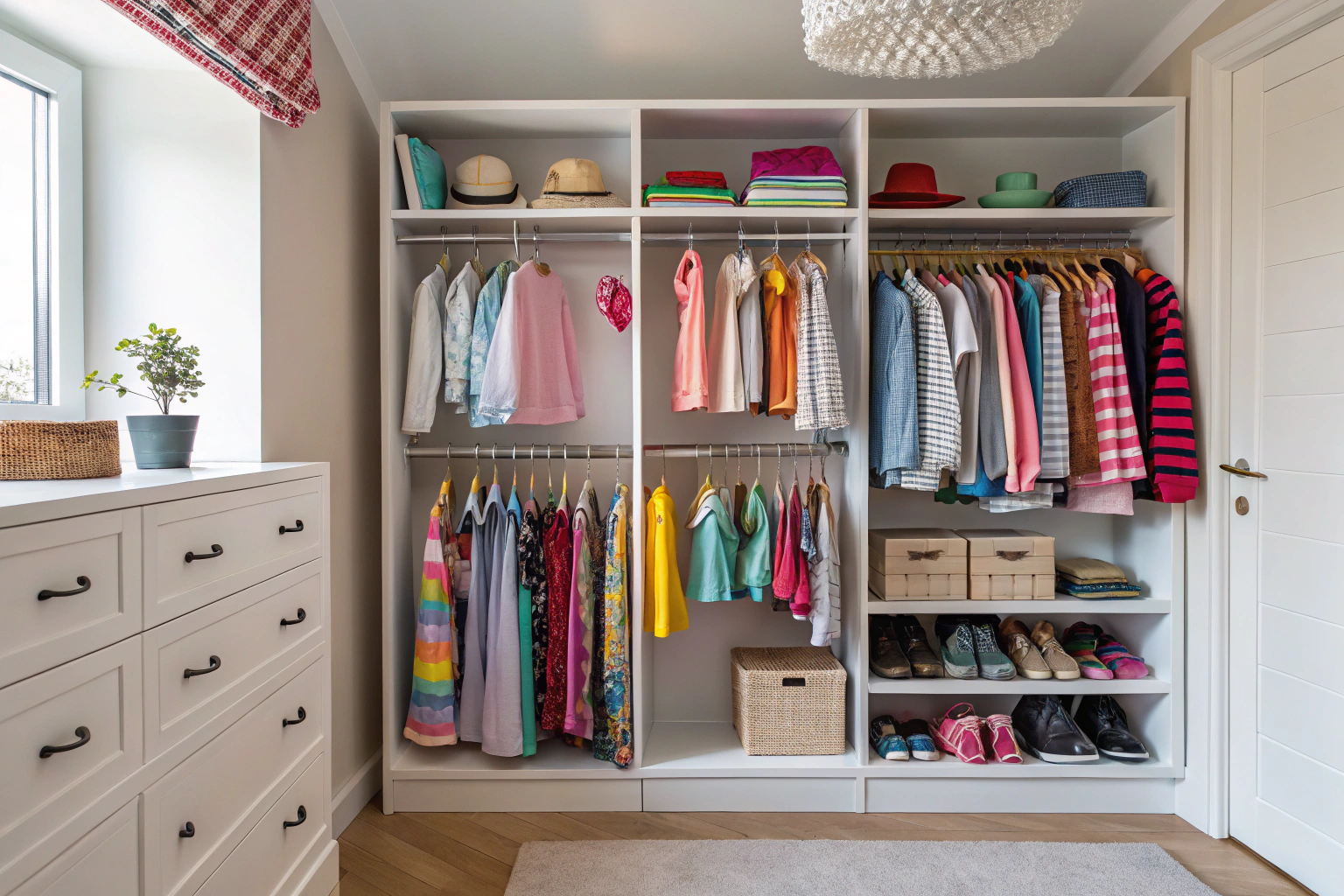Parents constantly juggle practicality and style when deciding how many clothes their kids actually need. Too little, and laundry becomes a daily chore. Too much, and money and closet space get wasted. For apparel brands and wholesale buyers, understanding this delicate balance helps in planning production volumes, sizing packs, and seasonal inventory.
On average, parents need to provide 60–100 clothing items per child annually—including basics, outerwear, and seasonal items—depending on the child’s age, lifestyle, and local climate.
This article explains the real-world needs behind these numbers—giving brand buyers insight into how to build collections that match family expectations.
What’s the Essential Wardrobe Size by Age Group?
Every age stage has unique wardrobe demands—from daily messes to school dress codes.
Infants may need over 40 clothing pieces, while older kids can rotate 20–30 items per season.
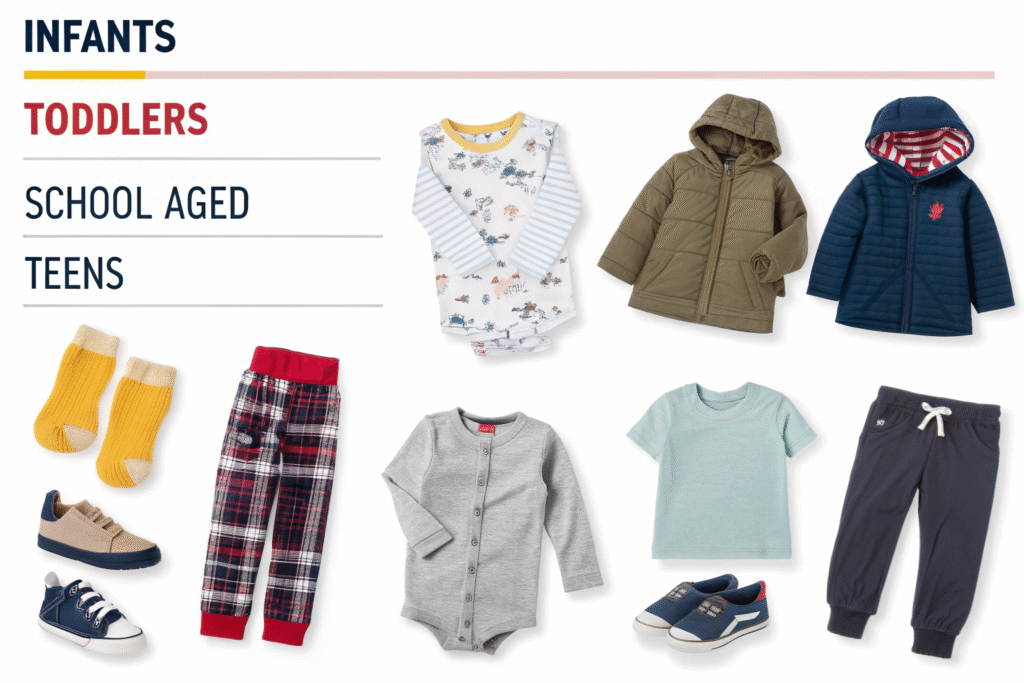
How Many Clothes Do Infants and Toddlers Need?
Newborns and babies go through several outfits per day due to spit-up, diaper leaks, or feeding spills. Most parents stock up on:
- 7–10 bodysuits
- 7 sleepers or pajamas
- 5–7 pants/leggings
- 5–7 tops
- 2–3 sweaters/jackets
- 10+ pairs of socks
According to BabyCenter, a basic newborn wardrobe includes at least 30–40 items to avoid daily laundry. Toddlers need similar amounts, plus durable playwear.
What About School-Aged Kids and Teens?
For kids aged 6–12, parents prefer capsule wardrobes with 7–9 interchangeable outfits. That means:
- 7–9 tops
- 5–7 bottoms
- 2–3 dresses (for girls)
- 2–3 jackets or hoodies
- 2 sets of formal wear
- 10–12 pairs of socks and underwear
Teenagers may demand more fashion variety, requiring frequent updates and social outfit options. Recommendations by Verywell Family suggest seasonal changes every 3–4 months for teens, especially in trend-sensitive regions.
How Does Seasonality Impact Kids' Clothing Needs?
Children outgrow clothing, but they also out-season it.
Each season adds 10–15 necessary pieces to a child’s wardrobe, especially in regions with extreme weather.
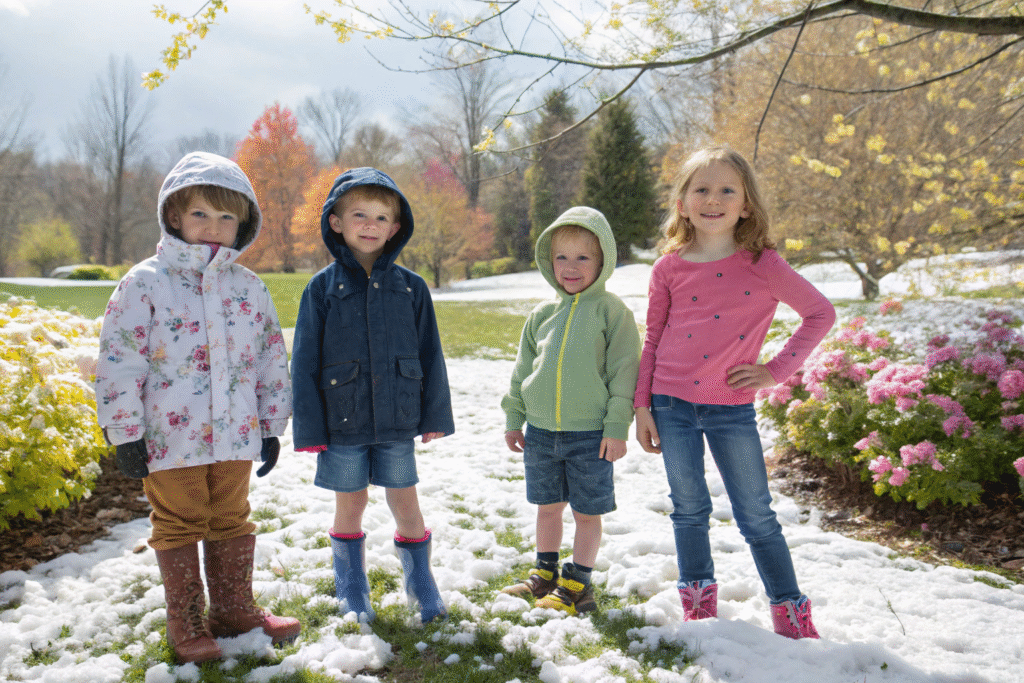
How Many Pieces per Season Do Parents Typically Buy?
Here’s a breakdown by season for one child:
| Season | Essential Pieces |
|---|---|
| Spring | 2 jackets, 4–5 long sleeves, 2–3 pants, rain boots |
| Summer | 5–7 T-shirts, 3–4 shorts, 2 swimsuits, sandals |
| Fall | 3–4 hoodies, 3 long pants, 2 beanies, 2 layers |
| Winter | 1–2 coats, 2 thermal sets, 1 snow suit, gloves |
This pattern means many parents buy up to 60 items per year, particularly in states like New York, Illinois, or Minnesota, where climate shifts demand full seasonal transitions.
What Materials Work Best Per Season?
Understanding fabrics helps wholesale buyers tailor product lines. For example:
- Spring/Fall: Mid-weight cotton blends
- Summer: Lightweight rayon, bamboo, jersey cotton
- Winter: Fleece, sherpa-lined cotton, quilted polyester
Leading children's brands like Hanna Andersson and Mini Boden design collections based around this seasonal material logic.
What Extras Beyond Basics Do Parents Commonly Buy?
Beyond everyday wear, kids need occasion-specific clothing too.
Most families allocate 10–20% of their kids’ wardrobe for accessories, formalwear, and activity-based outfits.
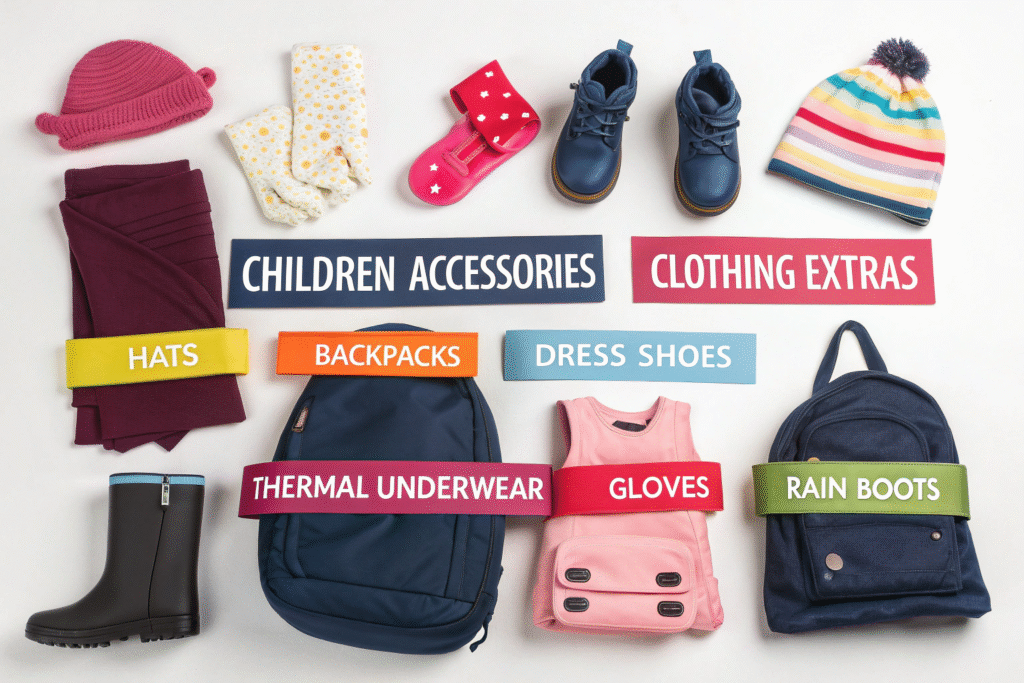
How Important Are Accessories and Footwear?
Very. In fact, many parents spend more on shoes and accessories than on tops or bottoms. The average child needs:
- 1–2 pairs of sneakers
- 1 pair of formal shoes
- 1 pair of sandals or boots
- 2–3 hats (sun/rain/cold)
- Gloves, belts, and scarves
Sites like Zappos and Stride Rite confirm that functional, stylish footwear is one of the top monthly purchases in children's fashion.
Do Special Events Affect Wardrobe Volume?
Yes. Holidays, birthdays, school functions, and family trips often drive short-term demand. Brands should prepare collections that cater to:
- Back-to-school fashion
- Matching family holiday pajamas
- Travel-friendly loungewear
- Birthday party or photo shoot outfits
By anticipating these demand spikes, suppliers can pitch pre-packaged bundles or limited-edition drops to their wholesale clients.
What Are Parents’ Expectations Around Laundry Frequency?
Laundry convenience heavily influences clothing purchase behavior.
Parents generally aim to do laundry 1–2 times per week—so kids’ wardrobes must be big enough to bridge that gap.
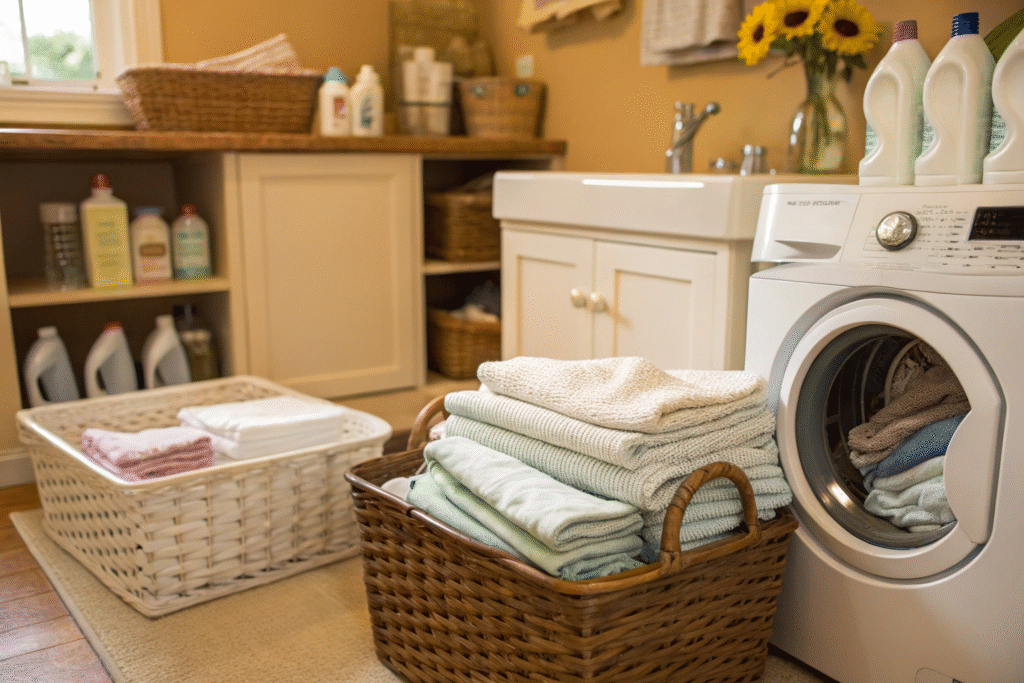
How Many Outfits Are Needed Between Laundry Loads?
Here’s a practical framework:
| Age Group | Outfits Needed for 1 Week |
|---|---|
| 0–2 years | 12–15 outfits |
| 3–5 years | 10–12 outfits |
| 6–12 years | 8–10 outfits |
| Teens | 7–9 outfits |
This means a single child might need 30+ outfit combinations to avoid stressful laundry routines. As highlighted by Consumer Reports, families often choose quick-drying, wrinkle-resistant fabrics to reduce washing burdens.
How Can Clothing Brands Solve the Laundry Challenge?
As a manufacturer, we focus on:
- Easy-care materials (pre-shrunk, colorfast)
- Clear washing instructions on labels
- Reinforced stitching to survive machine cycles
- OEKO-TEX® and hypoallergenic finishes for infant lines
Brands like Primary built their reputation on simple, washable, mix-and-match basics. We enable our partners to do the same with affordable, premium-grade wholesale solutions.
Conclusion
The number of clothing items a child needs isn’t just a parenting concern—it’s a product planning guide for global buyers and distributors. From age-based essentials and seasonal wear to occasion-specific garments and laundry practicality, parents’ expectations shape the way we design and produce.
At Fumao Clothing, we decode these real-life needs into efficient, flexible, and stylish kidswear collections—ready for resellers across North America and Europe. Partner with us to deliver exactly what families are searching for, season after season.

